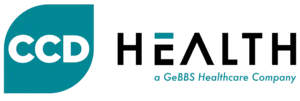6 Ways to Improve Average Handle Time (AHT) at Outpatient Centers

Reducing your medical center’s average handle times is challenging as you scale. Learn how to improve average handle time and calculate your AHT.
The patient care you deliver is more than just being polite to patients over the phone or listening to their concerns during an appointment. In today’s busy, hectic world, your patients expect quick, effective support services.
Whether a patient is calling to make an appointment or provide insurance information, they don’t have all day to wait in the queue, correct data errors, or follow up with your contact representatives to modify their patient data. How you handle patient calls and interactions can make or break your outpatient medical center’s success.
One way to improve your patient satisfaction through contact services is by lowering your average handling time (AHT). Longer call handle times can negatively impact patient satisfaction and perception of care, making your outpatient medical center’s patient retention challenging.
By the end of this, you’ll know everything about your medical center’s AHT and how to improve the patient experience.
What is Average Handling Time (AHT)?
Average handling time (AHT) measures the typical call duration with customer calls, beginning when the customer dials your number to the end of the call. Your AHT includes any hold times, transfers, conversations, and follow-up work after the call.
AHT is a call center Key Performance Indicator (KPI) that impacts your operational efficiency and agent effectiveness. But most importantly, it’s a defining metric in analyzing and optimizing the patient experience.
If your medical contact representatives have a longer AHT, this can negatively impact your patient experience, satisfaction, and service perception. Because of this, it’s essential to continually assess and improve your AHT.
How to calculate your average handle time (AHT)
To find your average handle time, use this formula:
(Talk time + hold time + follow-up time)
Total number of calls
Let’s say your outpatient imaging center received 300 calls that totaled 2,000 minutes with a total hold time of 900 minutes, plus a total follow-up time of 500 minutes, all divided by 300 calls. That means your outpatient imaging center’s AHT is around 11 minutes.
AHT = (2,000 + 900 + 500) / 300
AHT = 11.34 minutes
Compared to the industry standard of 6 to 8 minutes, your outpatient medical center’s average handle time is slightly over the normal AHT. Still, lowering your AHT is much easier said than done. Contact representatives are often understaffed and underprepared, and patient volume increases with every passing month.
What impacts your average handling time
There is no such thing as a ‘right’ or ‘wrong’ average handling time. Instead, you can evaluate if your AHT should be lower or higher, depending on patient satisfaction levels and overall call effectiveness.
As you evaluate your average handling time, make sure you consider the following variables that make your AHT higher or lower.
- Team size. If you have a small team of patient support representatives and receive a high volume of patient calls each day, you’ll have a higher average handle time. Still, the COVID-19 pandemic has left many medical outpatient centers short-staffed and unable to find talented representatives, making your AHT even higher.
- Technology stack. Do your patient support service representatives lack the right resources to automate responses, source data and verify insurance quickly? Medical contact representatives must be well versed in the unique modality and department of healthcare they’re supporting.
- Caller inquiries. Often, your representatives must schedule and reschedule appointments. They may also need to collect and verify insurance information, gather appointment information, or provide directions to your medical centers. Because the intent of each call varies, contact representatives will need a different level of information sourcing.
Simply put, average handling time is subjective to your medical center’s constraints. Still, don’t let a ‘poor’ average handling time stump you or limit patient satisfaction.
Now, let’s cover how you can implement call center best practices into your outpatient medical center to lower your AHT and provide a better patient experience?
Six ways to improve your Average Handling Time
Start with these six tactics when improving your average handle time:
1. Invest in call representative training
Start by setting up your call center training to support new or struggling contact agents.
You can lower your medical center’s AHT by training your care agents in the day-to-day resources they’re using and familiarize them with your outpatient medical system. An uneducated contact representative can hurt your customer satisfaction levels and leave a wrong impression that deters your patients from returning altogether.
Increase your call staff’s comfort and familiarity with the tools necessary to schedule appointments and update patient information, so they can be much more supportive and responsive while they’re navigating and updating patient information.
Consider training your care agents on your tools and software used, including:
- Your Radiology Information System (RIS)
- Call scripts for various patient scenarios
- Call routing across your organization
Additionally, make a conscious effort to train your agents on efficiency and patient satisfaction from their first day of work. When onboarding and training your representatives, consider the following:
- Educate your representatives with your medical center’s services through any educational content (yours or online). With a thorough knowledge base, your contact representatives can spend less time researching questions they should already know.
- Provide a ‘Best Practices’ guide of call handling techniques. Your best practices should include best practices such as greetings, close-ended questions, and call de-escalation.
- Allow your new agents to shadow your successful contact representatives.
By implementing these guardrails for new hires and struggling representatives, you’ll ensure that they feel supported and comfortable with the resources provided.
2. Offer a medical knowledge base
Medical knowledge bases can go a long way in lowering your AHT and empowering your contact center representatives. Knowledge bases help customers diagnose problems and provide your agents with quick resolutions to questions they may not be familiar with.
If you don’t offer your representatives the proper resources or knowledge base, they may not have the support they need to manage calls effectively.
Investing in self-service educational content will help your medical center contact representatives better assist your patients, lower your AHT, and provide perspective into common issues and resolutions. By providing a streamlined medical knowledge base and frequently asked how-to’s, your medical agents can search a question and find a solution to the patient’s problem quickly and easily.
3. Map common examples and provide scripts for common questions
While not all calls are the same, similarities do occur. Providing situational examples can help your agents better handle patient interactions and offer training on improving calls through empathy and de-escalation tactics.
Giving your call handler a setlist of examples can improve how they manage patient calls and provide different appointment scheduling approaches. Also, situational examples allow you to practice handling patient calls with your medical contact representatives. You can even use recorded calls from prior patient interactions to optimize the patient experience and pinpoint improvement areas.
Another option to reduce your average handle time is to map the minimum time per call and ensure that your agents are as efficient as possible. If appointment scheduling at your outpatient medical center takes 13 steps, use this to benchmark all other appointment scheduling calls and find ways to reduce this workflow.
By doing this, your call agents can recognize what a ‘good’ customer interaction sounds like, reinforcing training and proving that positive, impactful calls are possible. As they become more familiar with different scenarios, your call representatives can see into their strengths and areas of improvement, helping lower AHT and optimizing resources.
4. Measure and analyze your call KPIs
Assessing your call handling process can identify pieces of your workflow to streamline and evaluate your call handler’s performance. Keep a close eye on your contact center KPIs, including:
- Average time spent talking: How many minutes and seconds are spent from when your agent answers the phone to hang up? This does not include hold time or post-call time.
- Recurring questions or FAQs
- Missed calls: How many calls aren’t answered by an agent in time?
- Declined calls: How many calls are actively declined, likely because they’re on the line with another patient?
- Abandoned in queue: How many total patients hang up while waiting to speak to your representatives?
- Average hold time: How long are your patients on hold before speaking to an agent?
- Average time to answer: How long does it take a customer to reach an agent once they’ve been routed to the correct department & waited in the queue?
- Accepted transfer rate: What percentage of inbound calls do your agents transfer to another team or department?
- Customer Satisfaction Score (CSAT): CSAT indicates a patient’s satisfaction with the call agent’s services. High CSAT implicates excellent services and a high patient experience. CSAT often uses a scale of 1 to 5, where 1 is very dissatisfied and 5 is very satisfied.
- Net Promoter Score (NPS): This is a metric indicating a patient’s willingness to recommend your services to others. The higher your NPS, the better!
Measuring and tracking these KPIs over time will provide light into where you’re excelling and where you can improve. You can also see which call representatives handle the most calls, your average calls per hour, and other key performance indicators around your medical support services.
5. Repeat information back to your patients
Talking on the phone can be tricky, especially when communicating over insurance group numbers and quirky last names. Repeating information back to patients can improve the patient experience and solidify that all patient and appointment information was conveyed correctly.
Before ending a call with a patient, have your contact representatives repeat the information provided to ensure both the call handler and patient are on the same page.
Not only does this ensure you have accurate information, but it proves to the patient that the call handler is listening. Implicitly conveying these two sentiments to your patients over the phone will help strengthen your relationship, trust, and ease throughout their care.
6. Regularly communicate expectations to your representatives
Your medical contact support staff can’t improve their average handling time (and other critical KPIs) until they know what’s expected of them. Use your performance data from tip #4, and establish transparent performance benchmarks across the team and individual representative performance. You can even consider implementing a quarterly, bi-annual or annual performance assessment that benchmarks each representative’s performance according to predefined and communicated goals.
Just as your medical outpatient support representatives must understand your patients’ needs, you should communicate with them about your expectations surrounding Average Handle Time and other performance indicators.
 Lower your average handle time and improve patient satisfaction
Lower your average handle time and improve patient satisfaction
Focus on providing the best possible experience and care for your patients. If you’re struggling to scale your medical contact support program or don’t know how to improve your patient support operations, check out our webinar on ensuring Contact Center Business Continuity (even if your team is remote)!
Keep learning about how to optimize your patient appointment scheduling, minimize patient no-shows, and strategically schedule to optimize your medical center’s operations.


 Lower your average handle time and improve patient satisfaction
Lower your average handle time and improve patient satisfaction

